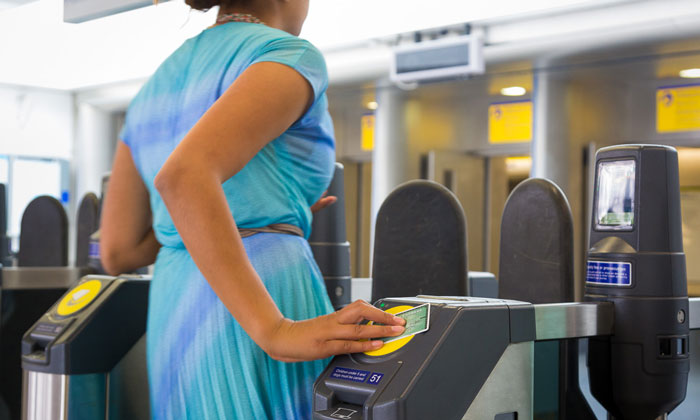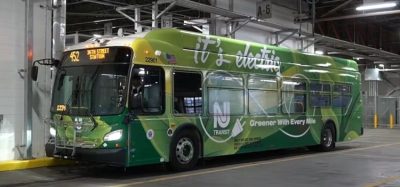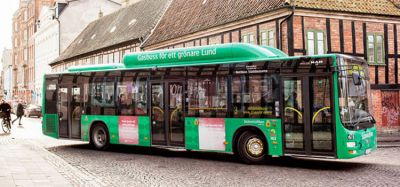How can we fully harness the power of data in the transport industry?
- Like
- Digg
- Del
- Tumblr
- VKontakte
- Buffer
- Love This
- Odnoklassniki
- Meneame
- Blogger
- Amazon
- Yahoo Mail
- Gmail
- AOL
- Newsvine
- HackerNews
- Evernote
- MySpace
- Mail.ru
- Viadeo
- Line
- Comments
- Yummly
- SMS
- Viber
- Telegram
- Subscribe
- Skype
- Facebook Messenger
- Kakao
- LiveJournal
- Yammer
- Edgar
- Fintel
- Mix
- Instapaper
- Copy Link
Posted: 13 January 2021 | Aurélien Cottet - Transdev, Darren Capes, Rahul Kumar - Keolis North America | No comments yet
A panel of public transport and urban mobility experts discuss the work that the industry’s public and private parties need to do to deliver better services through more effective data management and usage.


In a roundtable published in Issue 4 of Intelligent Transport late last year, our panel spoke about data sharing between transport authorities and other third parties. They tackled questions such as ‘how can data sharing be encouraged between private and public companies?’, and ‘how important is accurate data analysis to ensure services meet passenger expectations?’, as well as evaluating the importance of data visualition to both private and public operators.
Participants include:
- Darren Capes – ITS Policy Lead, Traffic and Technology Division, Department for Transport/Manager, Transport Technology Forum
- Aurélien Cottet – MaaS Project Leader, Transdev
- Rahul Kumar – Executive Vice President of Market Development and Innovation, Keolis NA
How can data sharing be encouraged between public and private companies?
Darren Capes: There are primarily two answers to this; there’s a technical answer and there’s a high-level business answer. I think the technical answer is about open standards and about sharing public sector data using the right open standards. Those standards must be freely available to the public and private sectors and that, again, is about ensuring that when people buy technology they specify the right standards that work commonly across different areas, in terms of function and in terms of geography.
In terms of business, it’s more about understanding the business need for data. It’s about the public sector understanding the value of their data in a realistic way – not being overconfident about how much it is worth in monetary terms but understanding how much it’s worth as a tool to deliver services better. For the private sector, it’s important to understand the limitations on public sector bodies – they don’t have an awful lot of resource to put into processing and publishing data.
Both sides must realise that by sharing data, we get better delivery of the services that councils want, and we get the ability for councils to engage with suppliers, and especially SMEs, to help provide new technologies and ways of working. These should be built around a common understanding of the value of data as the basis of building systems that help the public and operators to make better decisions about travel and network management.
Aurélien Cottet: It is not an easy question to answer, because when people are talking about data in the private companies, they are talking about the ‘new gold’. Sharing value is not easy to address – especially for the decision makers who, in the majority of cases, have no idea whether the data they have is worth something or not. As a result, they tend to say no when it comes to sharing that data.
On the other hand, producing data means that you need to invest, but it is no secret that public sector organisations often don’t have the budget to put the right systems in place in order to produce valuable and exploitable data. In many countries, the public sector is obliged by regulation to open its data to the public, so the question of encouraging it to do so doesn’t apply. In these instances, however, the public sector doesn’t have any kind of obligation to provide good, useable and structured data.
Data has revolutionised business”
The only way to encourage public and private companies to share data is by putting in place a strict regulation on what should be exchanged to enable mobility solutions that will benefit the community. Neither public nor private organisations can afford to lose sight of that; ahead of being a business, mobility is a right that everyone should have regardless of their physical and financial conditions.
Rahul Kumar: In the transportation arena, companies such as Uber, Lyft, and Citymapper were created to solve the growing desire from public transport riders for on-demand services. Transport authorities also saw the impact of on-demand expectations with their ridership.
This “disintermediation” saw mobility providers, such as ride-hailing firms, and passenger information providers skip public transport services and instead provide their solutions directly to customers, which has cut off transport authorities’ direct connection with riders.
In order to regain that direct relationship with riders and better integrate data across the business, public transport authorities must integrate better data to manage fleets and operations. Traditionally, transport authorities created the data and used it in a closed loop.
Today, with multiple data sets such as GPS and location-based data, transport authorities can utilise smarter tools to better understand their riders’ journeys. Integrating these data sources allows for traditional transport to be more responsive.
Data has revolutionised business. Public transport specifically can better incorporate the new troves of data into its business model to create new modes, to be more responsive to their riders, and to think differently about the effectiveness of their services.


Companies like Lyft have bypassed transport authorities in offering their services.
How important is data visualisation to ensure operators and authorities are getting value out of it?
Darren Capes: I think the important thing to think about here is the difference between data, information and intelligence. Data is a raw material, not an end in itself. Data needs to be turned into information, and that needs to be used to generate intelligence. At the end of that, visualising the answer is incredibly important. If you think about control room staff, they are people with an awful lot to do and potentially many different screens to look at. You have to present information in a way that allows them to make quick, accurate, good quality decisions. This is something the private sector really can do to help local authorities – taking very complex data, from multiple sources, aggregating it and allowing that data to be used in a simple, visual way for strategic and tactical decision making.
The interesting thing about the Transport Technology Forum’s COVID-19 data project is that it is really valuable in making decisions for business planning – thinking about policy development and evaluation, as well as evaluating actions already taken. However, it had to be visualised properly. One of the key things we do in the COVID project is data aggregation – bringing various datasets together in ways that allow them to be commonly mapped, and turning data into simple graphics allowing people to quickly understand what the data is telling them.
Aurélien Cottet: The data world is a world of experts, so it is therefore very important to make the insights garnered from it accessible to the people who will operate the systems according to their respective roles (e.g. technical, customer service, marketing). It is also important that the data can be easily read by executive committees so that they can compare it against their key performance indicators and service level agreements.
The most difficult part here is to visualise the data in the right way depending on who needs it and what their respective responsibilities are in the operation.
How important is accurate data analysis to ensure services meet passenger expectations?
Darren Capes: It’s important that we get people to understand the accuracy and timeliness of public sector data. When people use third-party apps and systems to plan journeys, if we want the journeys planned from separate systems to reflect our policies and strategies on transport then public sector data must be in there.
It has to be accurate and timely enough for the developers of those apps to want to use it, but it doesn’t have to be perfect to be usable. There’s often a temptation to think that data shouldn’t be opened up until we’re certain about the quality, but that’s not a reason for not sharing it. Often, the challenge is for industry to take imperfect data and make good intelligence out of it.
Rahul Kumar: We can’t manage what we don’t measure. Traditionally, transport authorities have measured only operational performance. Metrics like on-time performance and ridership are not the metrics that define the effectiveness of public transport.
By creating new indices that weigh differing data sets such as equity and accessibility along with the traditional operating metrics, transport authorities can better measure the full spectrum of their services. They can also shift the conversation from increasing ridership to increasing effectiveness. The sole measure of ridership does not necessarily tell the tale of how transport systems function and, more importantly, should function.
No single thing has had a bigger impact on consumers than the five-star feedback metric”
Once a public transport authority has fully integrated a new data source into its system, they quickly gain a clearer picture of the true mobility patterns of their customers and where on-demand services are needed. In addition to integrating the data, public transport must break down silos and integrate operational planning for fixed route and on-demand services.
By integrating on-demand transport modes such as microtransit to service transit deserts, or less densely populated areas, public transport can evolve to better meet the needs of the customer without struggling with over-extended service areas.
No single thing has had a bigger impact on consumers than the five-star feedback metric. Understanding rider sentiment will be critical to creating a more personal, responsive public transport system. Traditional rider sentiment is measured through surveys and incoming feedback. Using social media and outbound market analyses, transport authorities can get a better sense for rider sentiment and thereby improve the passenger experience.
Aurélien Cottet: We are living in a world where people are expecting the highest level of real-time information as possible. The accuracy of the data in real time is now key in keeping the passenger satisfied.
Recent studies show that passengers now want accurate real-time information about the mobility services they are going to use ahead of wanting information about the actual cost of the service.


London’s Oyster card has raised expectations among passenegrs that multi-modal travel can be completed with limited knowledge about ticketing zones etc.
How has open data changed mobility, and how can more operators and authorities be persuaded to be more open?
Darren Capes: Increasingly we’re seeing a desire by the public sector to think about complex journeys as a single entity that may involve a mixture of modes. We’re starting to see this happening with MaaS solutions taking off. Thanks to systems like Oyster, there is now a growing public expectation that journeys can be planned, paid for and undertaken with very minimal requirement to understand the detail about how underlying details – such as fares and zoning restrictions – work.
The fundamental foundation for doing that is data that can be shared between systems and used in platforms that allow data to be amalgamated. This helps to give people services that mask a lot of the complexity taking place in the back office, and provide services that are simple and easy to use. That’s the key to better public transport and to better services that get people out of their cars.
Data is still important for those car journeys, though, because people will increasingly expect live information in vehicles. They will expect information about congestion and, as we move to electric vehicles, they’ll expect information about charging points and about parking.
We’ll expect systems that allow vehicles and traffic signals to interact to become common. Sharing data between vehicles and the infrastructure openly will be key to seeing such services deployed.
Furthermore, as transport modelling technology improves, it moves us from a situation where you run a model overnight to tell you what you should do next year, to a situation where you run models in faster than real time to tell you what you should do in the next quarter of an hour. For that, you need reliable, good quality data, often from many sources that can be amalgamated into single, useful datasets.
Aurélien Cottet: Good, real-time, quality open data has ensured that traveller information systems can reach the level of service that users now expect.
It’s not necessarily a case of persuading operators and authorities to be more open, but a case of how and where they can find the budget to produce good real-time and useable data! I have been at a number of events and conventions where private mobility companies would pay for good quality data from operators and authorities.
The solution has to be to create the right conditions for public transport companies to provide this data without using tax-payer money.
Rahul Kumar: Public transport has used data in several ways over the last few decades. From operational tools such as computer-aided dispatch (CAD), to passenger information tools like wayfinding and fare payment, data has played a critical role in the everyday function of a public
Related topics
Artificial Intelligence, Infrastructure & Urban Planning, Intelligent Transport Systems (ITS), Journey Planning, Multimodality, On-Demand Transport, Passenger Experience, Public Transport, Ticketing & Payments, Transport Governance & Policy, Travel & Passenger Information
Issue
Issue 4 2020
Related modes
Bus & Coach, Metro, Ride-sharing & Car-sharing
Related organisations
Citymapper, Department for Transport (DfT), Keolis, Lyft, Transdev, Uber
Related people
Aurélien Cottet, Darren Capes, Rahul Kumar








